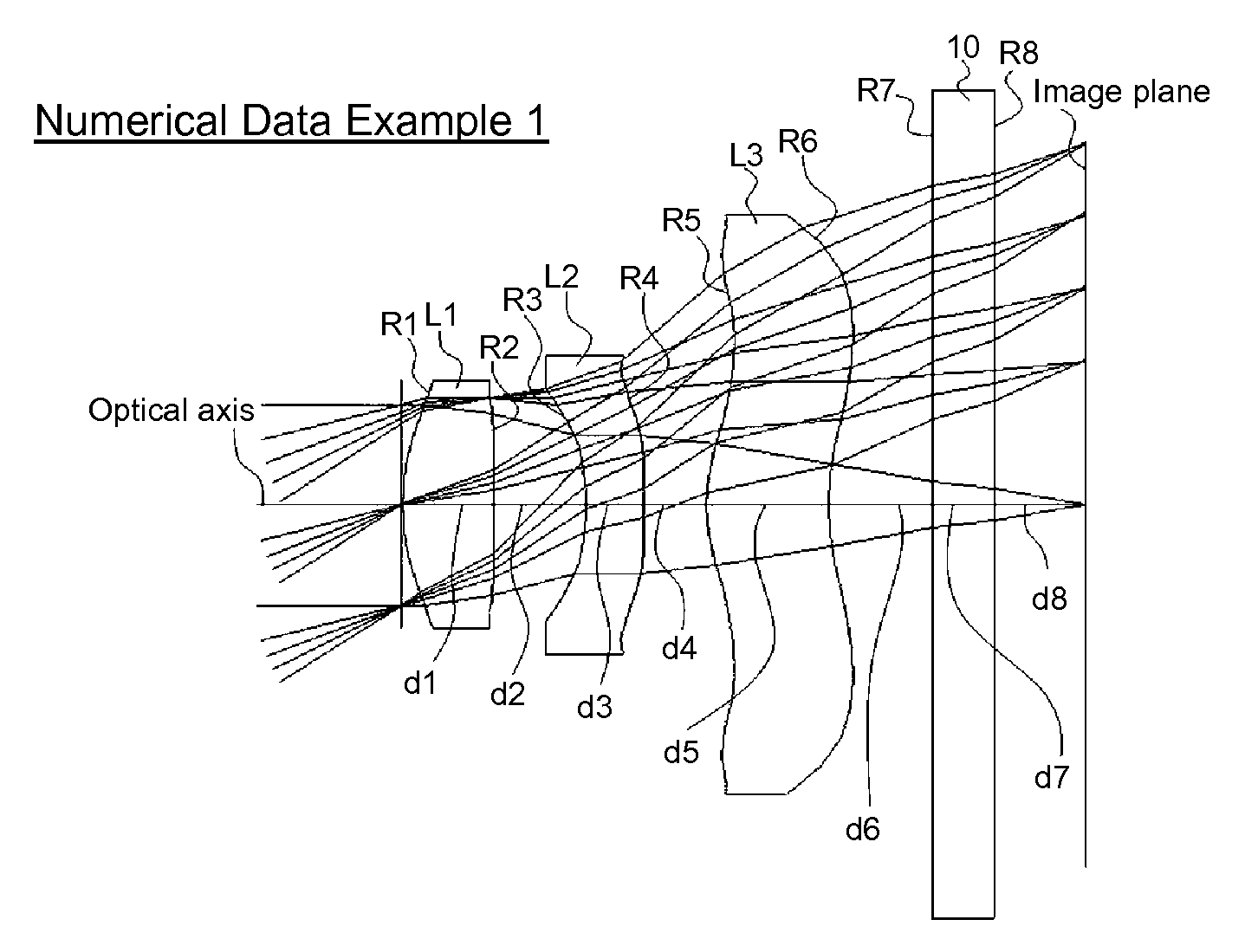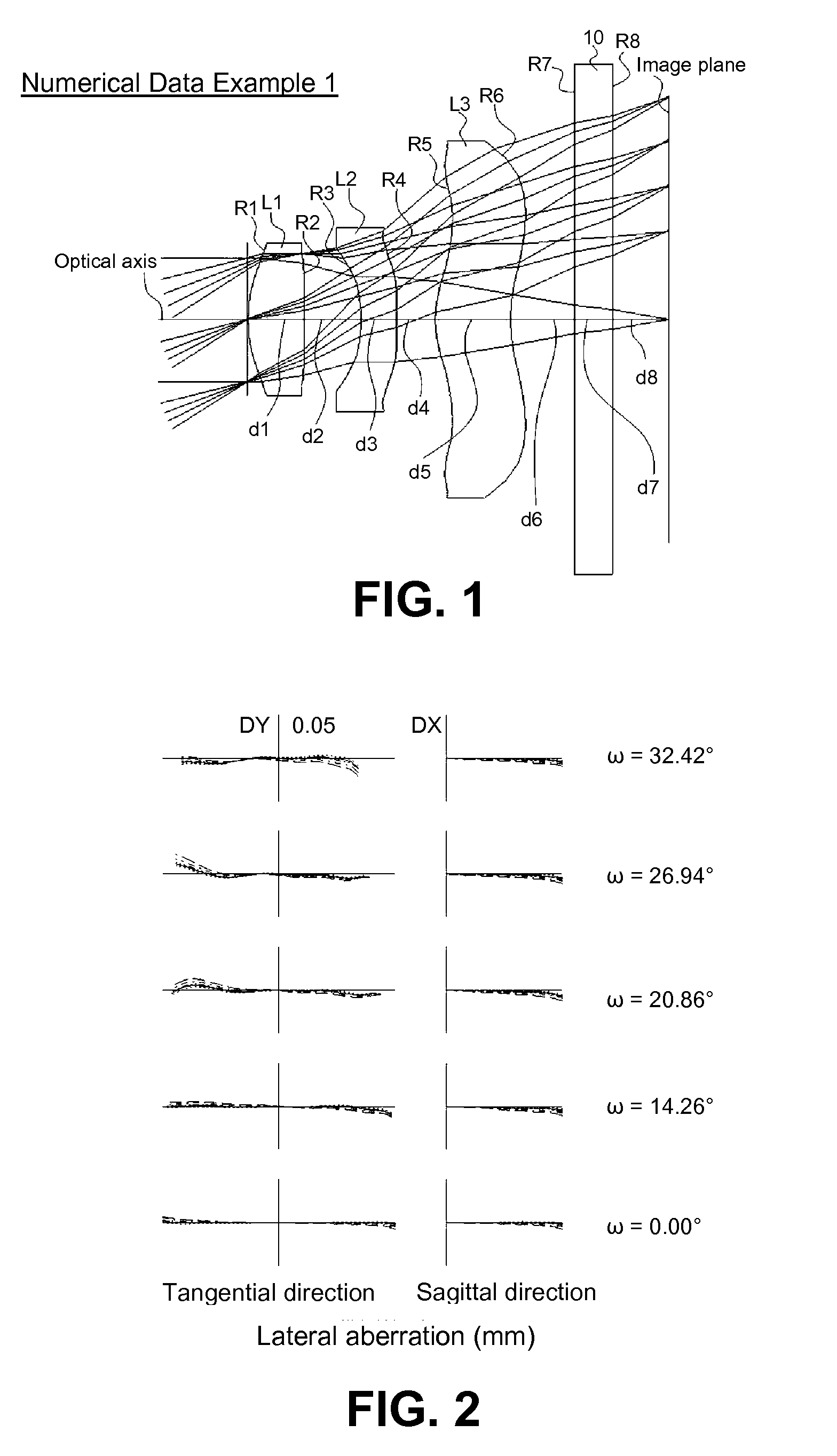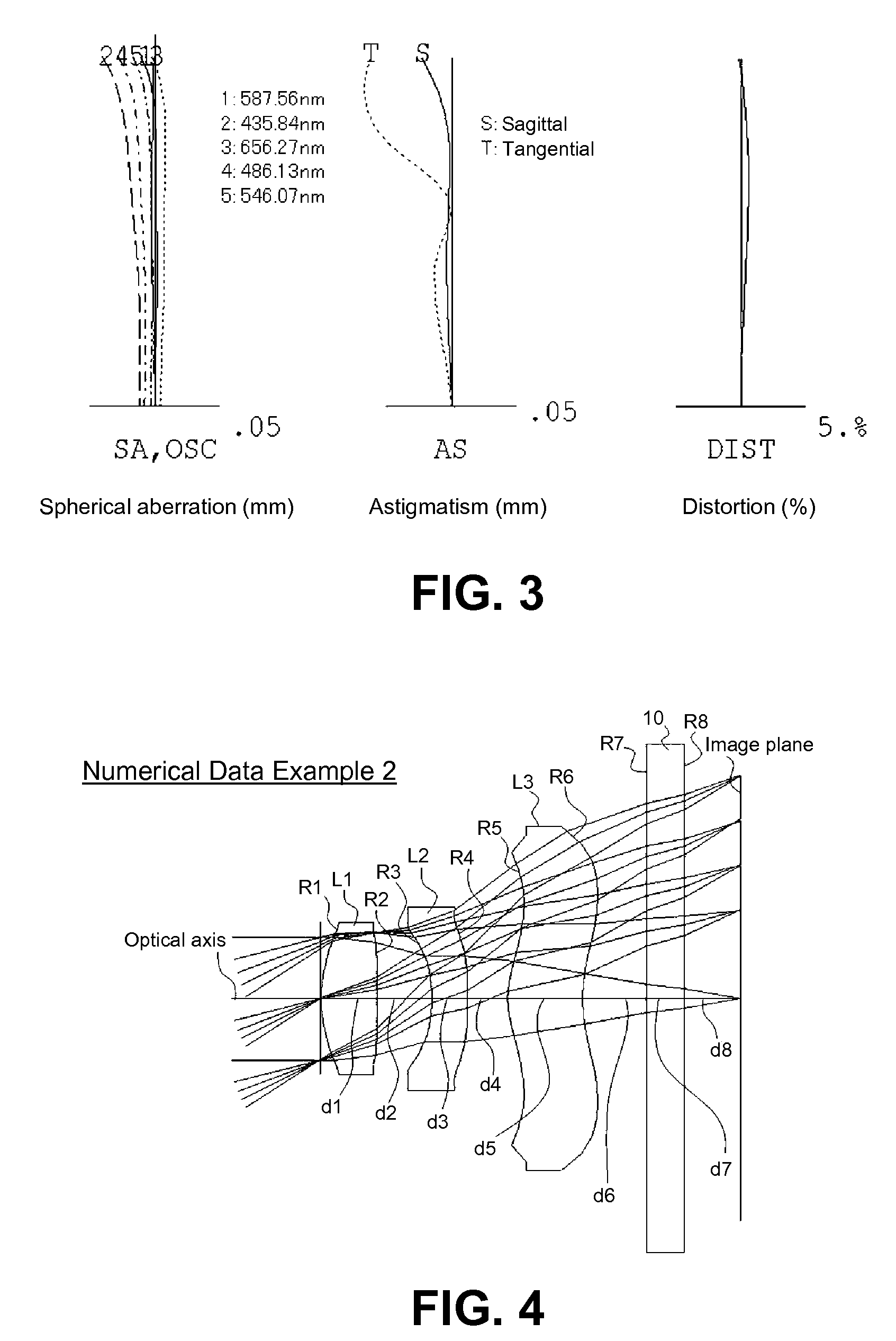Imaging lens
a technology of imaging lens and image surface, applied in the field of imaging lens, can solve the problems of difficult to achieve both miniaturization and satisfactory aberration correction, and the focal length of the lens system is relatively long, so as to achieve good image-forming performance, reduce the thickness of the imaging lens, and maintain the flat image surface
- Summary
- Abstract
- Description
- Claims
- Application Information
AI Technical Summary
Benefits of technology
Problems solved by technology
Method used
Image
Examples
Embodiment Construction
[0036]Hereunder, referring to the accompanying drawings, embodiments of the present invention will be described.
[0037]FIGS. 1, 4, 7, 10, and 13 are schematic sectional views showing image lenses in Numerical Data Examples 1 to 5 according to the embodiment, respectively. Since a basic lens configuration is the same among the Numerical Data Examples 1 to 5, the lens configuration of the embodiments will be described with reference to the lens sectional view of Numerical Data Example 1.
[0038]As shown in FIG. 1, the imaging lens of the embodiment has a first lens L1 having positive refractive power; a second lens L2 having negative refractive power; and a third lens L3 having positive refractive power, which are arranged in this order from an object side to an image side of the imaging lens. A cover glass 10 is provided between the third lens L3 and an image plane of an imaging element. It is noted that the cover glass 10 may be optionally omitted.
[0039]The first lens L1 has an aspheri...
PUM
 Login to View More
Login to View More Abstract
Description
Claims
Application Information
 Login to View More
Login to View More - R&D
- Intellectual Property
- Life Sciences
- Materials
- Tech Scout
- Unparalleled Data Quality
- Higher Quality Content
- 60% Fewer Hallucinations
Browse by: Latest US Patents, China's latest patents, Technical Efficacy Thesaurus, Application Domain, Technology Topic, Popular Technical Reports.
© 2025 PatSnap. All rights reserved.Legal|Privacy policy|Modern Slavery Act Transparency Statement|Sitemap|About US| Contact US: help@patsnap.com



